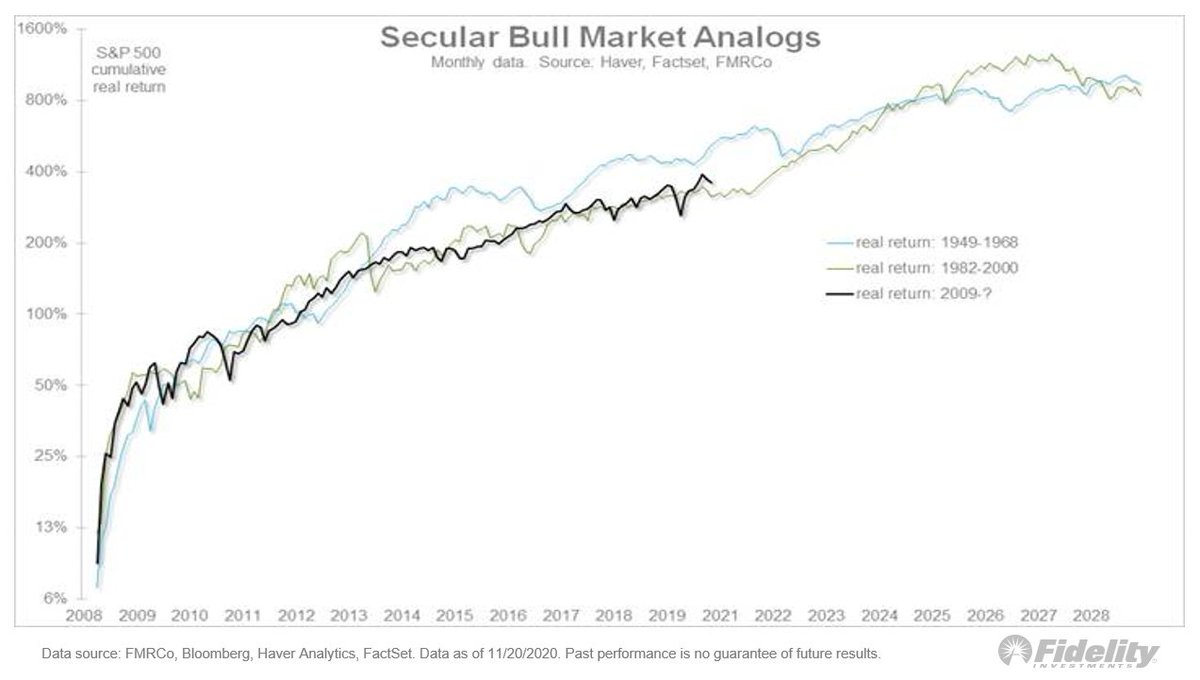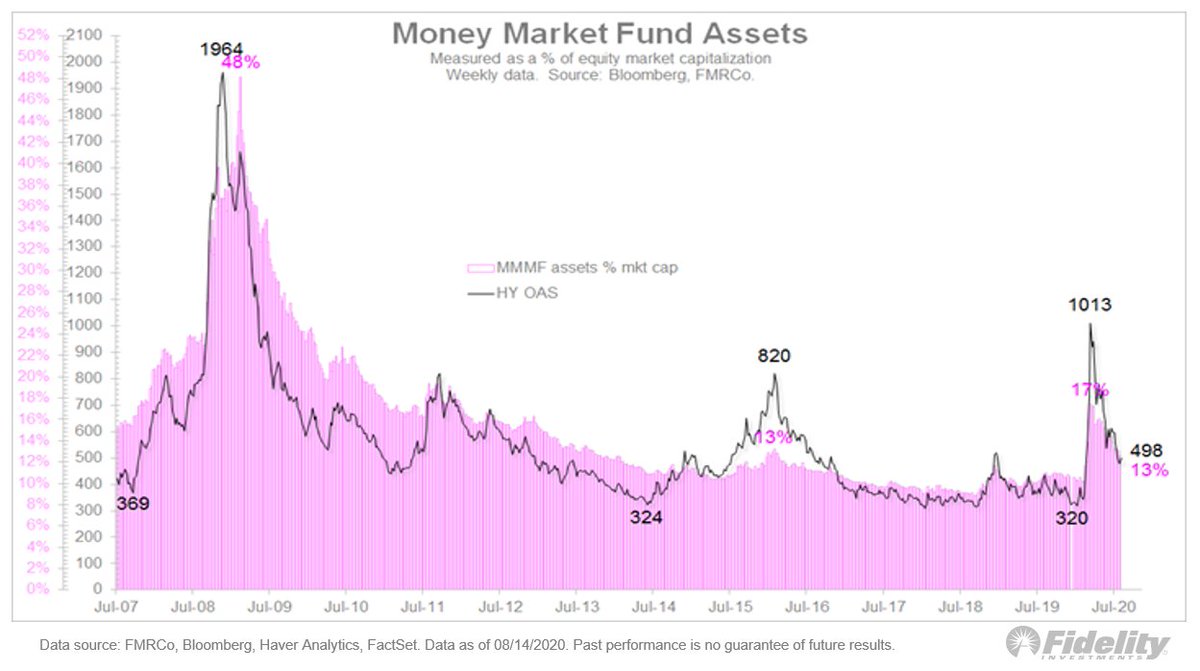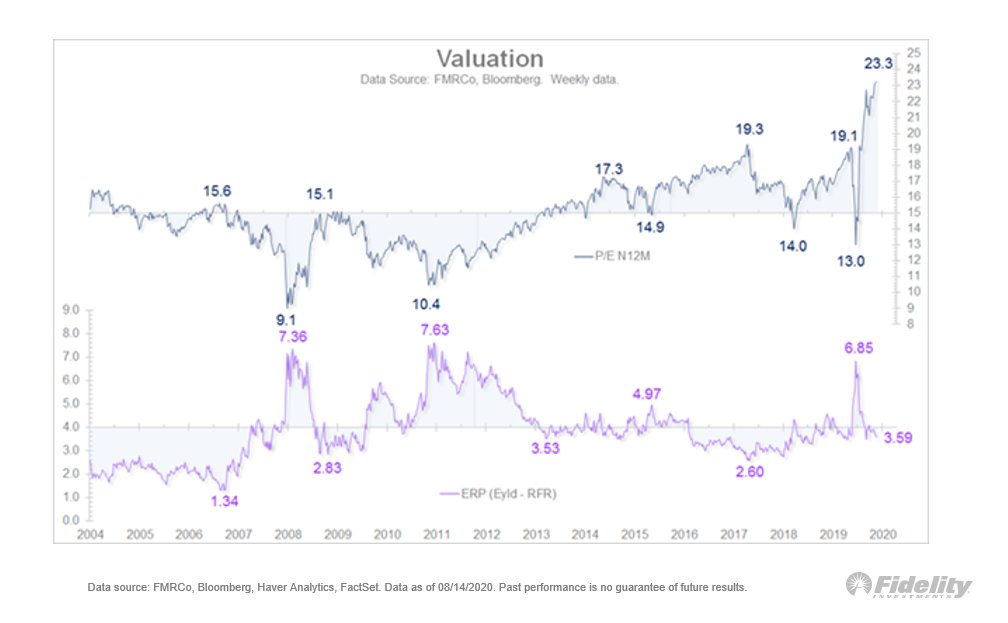
Bitcoin is in the spotlight these days but let’s not rule out #gold. Let’s assume that in coming years the current fiscal/monetary regime were to produce the same kind of 10% growth rate (CAGR) in the money supply that the 1930s/1940s & the 1970s produced (THREAD/1)
Looking back, both periods produced a 10% CAGR for M2 that lasted at least 10 years and that took M2 from below its long-term exponential trendline to above it. Both these previous periods produced a strong advance in the above-ground market value of #gold relative to M2. /2
What if we see this pattern again? What do I think that would that mean for the price of gold and how might this dynamic change now that #bitcoin has entered the scene and seems to be cannibalizing gold? /3
Well, I believe it is happening again. Here, the M2 money supply in the top panel (gray line), overlaid against the above-ground #market value for gold. The dark blue line at right shows the combined market value of #gold plus #bitcoin. /4 

Currently, M2 money supply is at $19.1 trillion while the market value for #gold is at $10.8 trillion and the combined gold plus #bitcoin market values is at $11.3 trillion. /5
The bottom panel shows the rate of gold to M2 in the gold line and the ratio of gold plus bitcoin to M2 in the purple line. For gold alone the ratio has already climbed to 57% from 47% and for gold plus bitcoin it has climbed to 59%. /6
So what might happen if the gold + bitcoin ratio climbs back to the 90% level? If #bitcoin were to reach its S2F target and gold were to compound at a 10% CAGR? This chart offers some historical perspective. 7/END 

• • •
Missing some Tweet in this thread? You can try to
force a refresh












